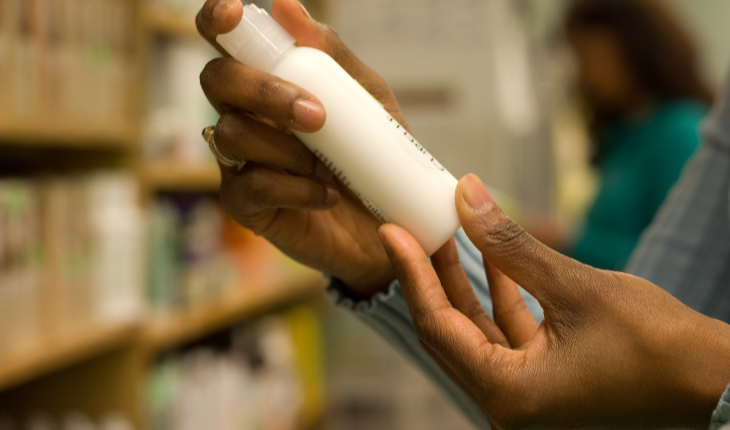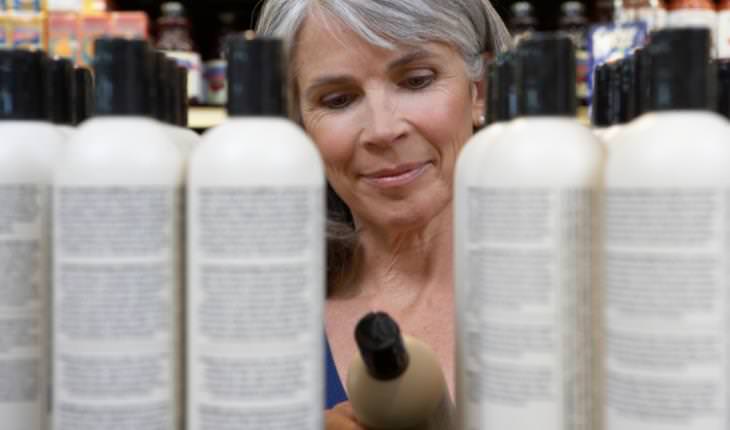So summer has begun, and your skin is acting up accordingly. It could be pigmentation, an acne flare-up, an itching rash, or a bad case of chafing that puts a hamper on your summer fun. So you go to the store and purchase the latest creme promising to take care of your compromised skin. But you used up the entire tube, and not much has changed. Sounds too familiar? We're here to take care of that. In this article, we'll teach you how to decipher the ingredients list on the back of your toiletry products, so that you can see right through the formula and know how effective it is.
The top 5 rule
Every ingredients list in the world follows a certain code to ensure the unification and clarification of formulas worldwide. This is called International Nomenclature Cosmetic Ingredient, or Inci for short. These are systematic names, usually in Latin, meant to help identify ingredients in every language. This way, things like avocado oil will be called their Latin name (Persea Gratissima). Almond oil will be called Prunus Amygdalus Dulcis, Shea Butter will be Butyrospermum Parkii, and so forth. Some companies include the explanation in brackets, like this: "Butyrospermum Parkii (Shea Butter)." While this format of the Inci is complicating things, if you know the ins and outs, you can use it in your favor.
The Inci protocol states that ingredients are listed in descending order of concentration, from highest to lowest percentage in the formula. Reading the first five or six ingredients in the list should give you an idea of what this product can do and what its consistency is. If there are many oils and butters, it will be thick, and if the ingredients are lighter, like glycerin, for example, it will be runny. Remember that the active ingredients don't have to be among the first five or six on the list to be effective.
Labels usually don't specify percentages of ingredients that aren't active. Our tip is to look for Phenoxyethanol, the most popular preservative right now. Regulations don't allow it in a concentration of over 1%, so this will be a good marker. Anything below 1% doesn't have to be listed in descending concentration.
Pay attention to percentages
Usually, the first ingredient will be water, making up 70%-80% of the formula. The next two or three ingredients will make up 5%-10% of the formula, and then there will be lower percentages of 1%-2%, or fractions of percentages. But a lower percentage doesn't mean lower efficacy. Some ingredients' efficacy doesn't rise with percentage, like in the case of niacinamide (a vitamin B derivative). Some ingredients are too irritating at higher percentages and are, in fact, only effective in minuscule quantities of less than 1%, such as retinol (a vitamin A derivative).
What ingredients would we only want to see at low percentages?
- Retinol/retinaldehyde/retinoic acid - these are forms of vitamin A - powerful anti-aging agents. They increase cell turnover, treat fine lines, increase collagen production, and treat acne.
- Co-enzyme Q/ubiquinone - an antioxidant that also treats fine lines.
- Hyaluronic acid is an intensive hydrating ingredient that is irritating at high percentages.
- Preservatives.
- Peptides.
- Exfoliating acids.
Get acquainted with common ingredients
While there are hundreds of thousands of ingredients out there, and new formulations synthesized each day, some ingredients are considered classics, no-brainers, or gold standards. Here are some examples:
- In every hair conditioner, you're likely to find behentrimonium methosulfate. This is a conditioning agent meant to create a slip effect, so that your hair is smooth and easy to comb through.
- In every moisturizer, you'll find either glycerin, caprylic triglycerides, or cetearyl alcohol. These are the most common ones, all are great for a healthy functioning skin barrier. They're not likely to irritate or cause problems in the skin.
- In every soap or shampoo, you're likely to find sodium laureth sulfate, which is a mild surfactant. Surfactants break down surface tension so that oil and water mix, in order to wash oil build-up from our scalp or face.
Enjoy this video by Dr. Vanita Rattan, explaining different ingredient groups:
What do I need for my problem?
If there is a specific problem in your skin you're looking to treat, look for ingredients that target your issues. Here are some to know:
Soothing ingredients:
- Aloe vera (Inci name: aloe barbadensis).
- Green tea (Inci name: Camellia Sinensis Leaf Extract)
- Chamomile (may appear as bisabolol)
- Allantoin
- Azelaic Acid
- Centella Asiatica
- Oats (Inci name: Avena sativa).
Anti-aging ingredients:
- Peptides (anything that ends with the word peptide. For example, Dipeptide-1, Hexapeptide-1, Tetrapeptide-11, etc.). These are light and air-sensitive amino acids that will function as skin-restorative or soothing agents. Make sure they come in an air-tight, opaque package.
- Vitamin A derivatives (all forms of retinol- Retinyl palmitate, Retinaldehyde, Tretinoin,
Adapalene and so forth).
- Sunblock! Every and any ingredient will do. As long as it's over SPF 30, and you re-apply every two hours when out in the sun- it will be effective. Guaranteed.
- Antioxidants. These fight free radicals and prevent premature aging. Most common forms will be vitamin E (Tocopherol), Green tea, resveratrol, ferulic acid, and any form of vitamin C (L-Ascorbic Acid, Ascorbyl Glucoside, or Sodium Ascorbyl Phosphate- just to name a few).
Oily skin ingredients:
- Benzoyl peroxide. This one kills acne bacteria.
- Salicylic acid. An exfoliating acid that cleanses and unlocks pores.
- Niacinamide. Regulates oil production in the skin, and in certain percentages even clears out pigmentation.
Dry skin will benefit from skin barrier fortifiers, such as ceramides, or jojoba oil. Read more about moisturizing ingredients here.
What else to keep in mind?

- Some ingredients are known potential irritants, and you're advised to either avoid or consume them in low quantities. These are essential oils, fragrances, and denatured alcohol.
- That said, there is no such thing as "good" or "bad" ingredients. Not all alcohols are bad, not all silicones are to be avoided, and not all preservatives are carcinogenic. They each serve a purpose and are backed by research.
- Find two or three companies that you trust. This way it will be easier to find a product you know is good for your standards.
- Pay attention to the expiration date and the little jar date! The number on the jar says how long you can use this product once opened. Throw away anything bad, even if it still smells good.
Sources: 1, 2.




